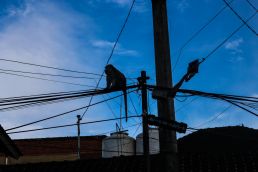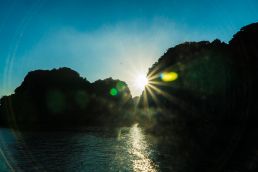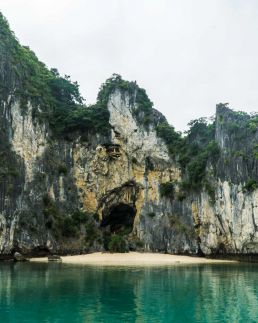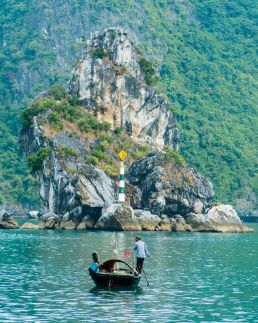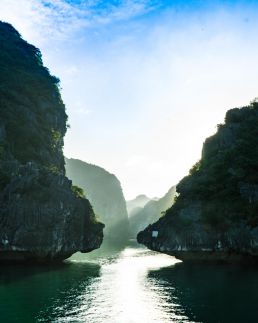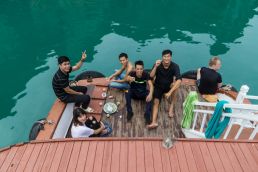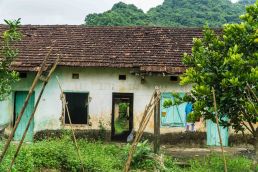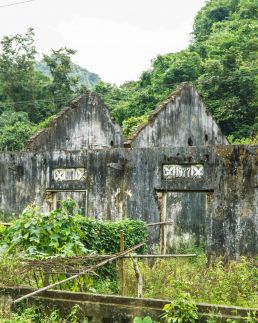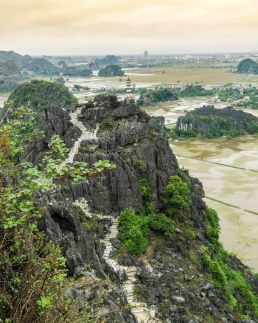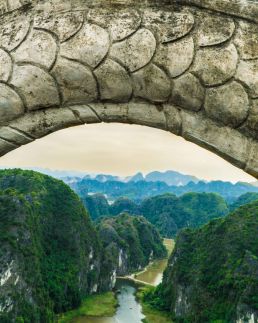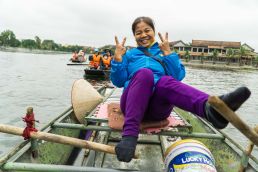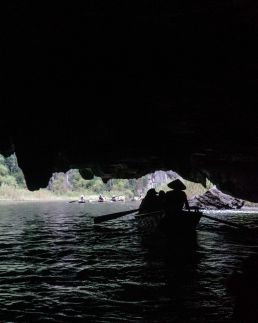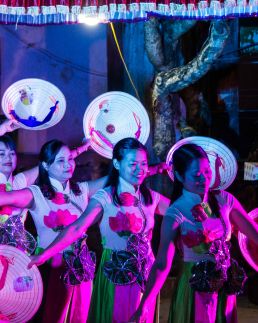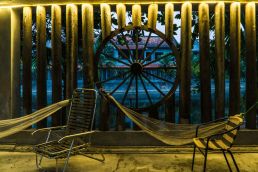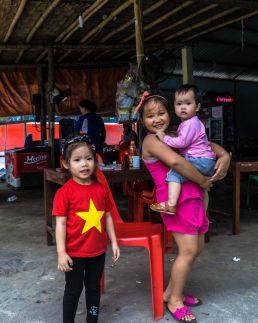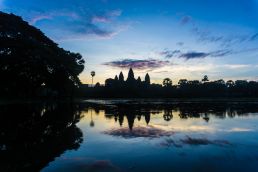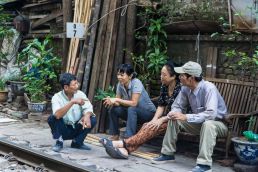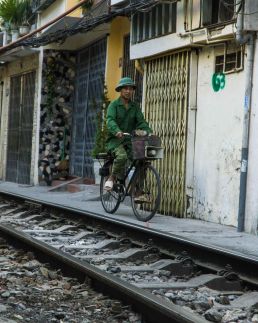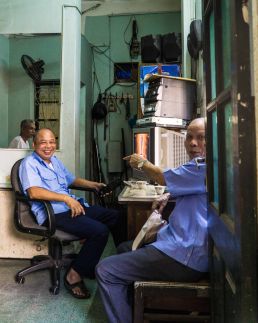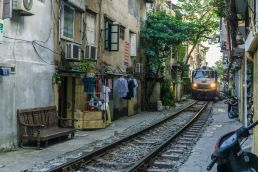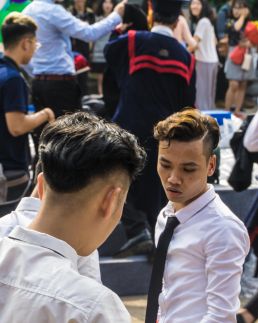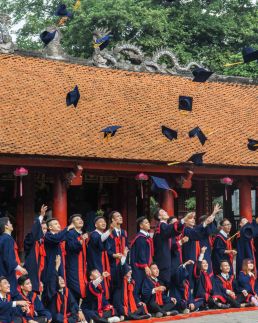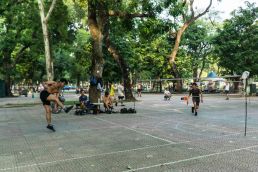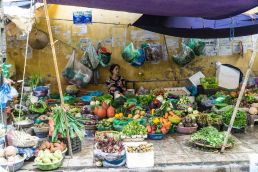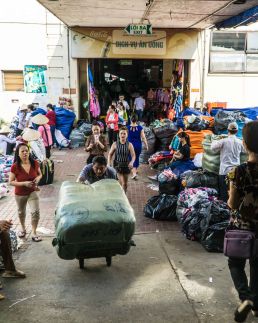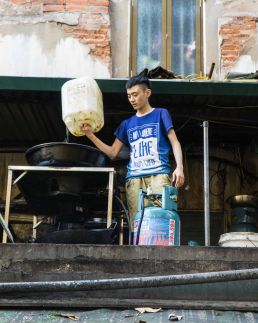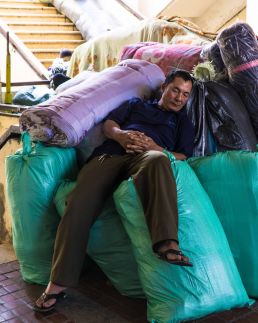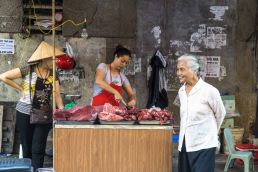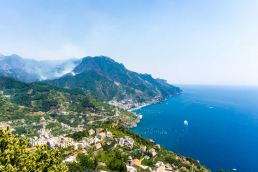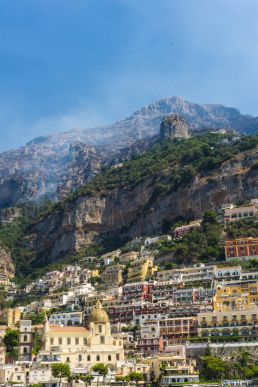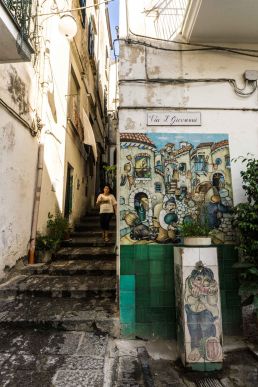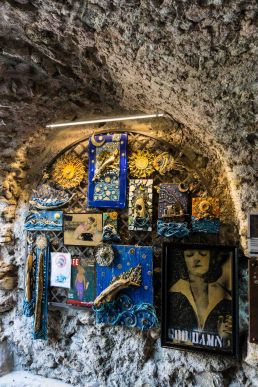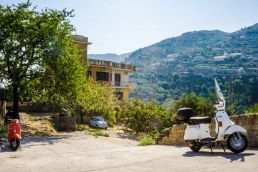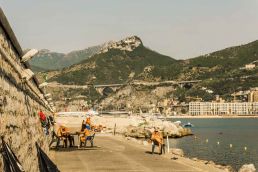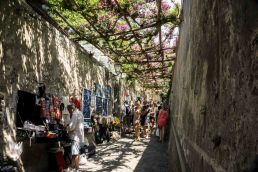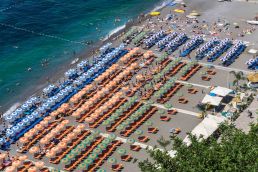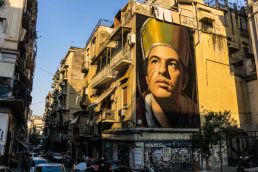Bali and Indonesia, a renewed perspective on paradise
When I first travelled to Bali, Bali meant so many novelties in my life. It was a first time in Asia, a first time in a surfing mecca, a first time in what my mind constructed as true paradise. That was two years ago, and time and experience have led me to reread my old travel journal to see how my perceptions on travelling have changed.
My fascination for flying is still untouched, because airports and airplanes are a tangible representation of close future adventures. They are promises. Even though I had a clear idea of Bali as a massive tourist destination, at that time I didn’t know any other place in Indonesia. After two weeks in paradise, Bali became my sole idea of Indonesia.
For two years, I didn’t give it more thought than that. Bali was Indonesia, Indonesia was Bali. Well, what an embarrassing mistake! Now that I have toured several islands in the country, Indonesia has become an entity of its own and Bali, to be honest, has stopped looking like true paradise. And don’t take me wrong, I still love it and enjoy it, but Bali is best described as a spoiled western-like paradise. But don’t bail out on it yet.
Bali is a great landing page, and very close by you can find so much more about a fascinating, rich and culturally diverse country, that is Indonesia of course. Lombok, a half-day ferry ride from Denpasar, already gives you a whole different insight on what Indonesia is really about. First of all, forget about Hinduism and welcome Islam, the main religion of most islands around the country.
The temples give way to mosques, the luxurious resorts of Canggu and neat guesthouses in Uluwatu fade in the background to give way to slow WiFi connections, traditional huts in Kuta and scarce party garitos. But that does actually make the whole experience better. Why? The beaches aren’t packed, the waters are really clear (since pollution hasn’t darkened the colours) and you feel overwhelmed after catching a wave on your own for once.
This year, when I repeated Bali, I had to surf several days in competition with plastic bottles, bricks and other random shit thrown out by the thousands of tourists (including me) crowding the island. It’s sad and preoccupying, but we’re definitely far to solve that as a society.
The importance of perspective
And back to my point, sorry. Opening my eyes in Lombok made me think on how much my ideas on travelling have changed radically. And how travelling has changed my ideas on life and human beings. I’ve spent five consecutive months in Southeast Asia, taking all the good and bad things it has to offer. I have experienced the astonishing views, the reasonable (and also unfair and unreasonable) prices, the beautiful and kind people. On the other hand, the hagglers, scammers and the painful toilet visits, to cite some, have also been there.
Overall, I’ve become aware of how large is the world we live in, and how good, bad, right and wrong constantly mix together. And it’s fine, just like when I’m home in Barcelona and visitors tend to oversimplify: paella, toros, cerveza and maybe now Independència.
I’m not sure I could specify what I’ve learned from all my travels, but after visiting Lombok, Sulawesi, Flores and Sumatra, I clearly gained conscience of my wider perspective. And perspective, in a world predated by capitalism, individualism and egocentricity, is a good attribute to stretch out. Know more, learn more: about other people, cultures, societies and even religions. There’s no better school of life.
How narrow-minded do we grow up that we feel compelled to generalize after a couple of days visit, or not even that, on a whole new country and a different society. How could I transform Bali (which is a really unique spot in Indonesia, an exception) into a whole country. It’s tempting, but it’s wrong.
Well, now I won’t tell you which island in Indonesia represents my personal paradise, because I’ve learned to wait for my next adventure to validate my older thoughts. And this process keeps on going. I just know that every single 12 hour bus ride, the night ferry ride or the three scales flight journey was all worth it. Allow me a tip: Indonesia should never be visited as a one island trip.
The only thing I know is I still love Bali, those (archetypal) nights in Single Fin and those lefts in Uluwatu. But now, two years later, I know Bali is not the ultimate and true paradise. And it’s silly I actually wrote that in the past.
Paradise is, maybe, in another latitude of our world… or just an unattainable ideal in our minds. I know all this now thanks to my commitment to travel, and there’s not a single day I regret it. Work on your perspective, change it from time to time, and you’ll note how your life improves fast.
P.S. And if you can’t travel (excuses apart), open a book and travel through its pages, I would say the effect is quite similar and you just need, hopefully, some paper and a reading light.
Postcards from Vietnam (II) – A crush on the north
I have a special thing for the north. Like any other crush, it’s pretty much an irrational thing. Just knowing I’m north delights me. I come from a northern region in Spain (Catalonia) and I love my summers in other regions in Spain, my grandpas places in the Pyrenees and Asturias. I also feel enchanted everytime I put my feet in the Basque Country, for example.
For a Swedish, let’s say, being north in Spain is stupid, it has a whole different meaning. A cold related meaning, probably. So that’s why it’s irrational, it’s just a connection in my brain that sparks when I think ‘oh, I’m north of the country’ or ‘I’m north of the city’, even. So, probably, all of this plays a part when I think of Northern Vietnam as my favourite latitude of the country.
First, Hanoi is amazing and waaaay nicer than Ho Chi Minh City. Then there is green. Lush green, to be precise. Mountains and hills in this part of Vietnam are just everywhere you look at. The rain does its job, and that’s why you have to appreciate rain too. I’m saying this after skipping a main tourist highlight such as Sapa. I don’t need to see it to know it just adds more reason into my argument.
For me, North Vietnam was divided between two incredible spots: Cát Bà and Ninh Binh. Both of them are touristy but, in terms of Vietnam’s most travelled routes, are still preserving some off-the-beaten-path allure. So don’t brag too much about and just go!
A cheaper visit in Ha Long Bay
Cát Bà is the largest island in Ha Long Bay. Ah, now it rings a bell! Most tourists skip it because the world famous and UNESCO ‘protected’ bay is usually visited with tours that start and end in Hanoi. Big mistake. You’ll pay double or triple rates and spend half the day in a bus. Departing from Cát Bà I had the most amazing day trip on a boat I can recall. Just 14 dollars, with abundant and delicious food, kayak session and snorkel equipment included.
The most amazing thing of it all was, nonetheless, the guide and his company. Extremely friendly, he went out of his way to please the small passage (8 people) and actually guided us the following day to some great views of the city and its fisheries for free. Keep in mind, we only spent 14 dollars for ALL of it. Chans, the guide, even treated us to free rice wine, the local’s drinking delicatessen, in the evening.
I don’t find more words to explain how great the boat trip was. Cát Bà, to complement the bay, has the beautiful Ba Bé National Park a motorbike ride away, great views and a fun trekking path. And from here, we went to more boats, just of another kind.
Ninh Binh is defined as the Halong Bay inland. The mountains here are more majestuous, some crowned by spectacular dragon statues and pagodas. The area is perfect for biking around and get on local rowboats to explore the rice fields and the caves that give way to the river. You’ll be surprised when you find out how they row there… because they don’t use their hands.
Anyway, my conclusion is that, if I had to repeat this trip, I wouldn’t skip this locations at all.
Cambodia is no country for old men
That Cambodia is no country for old men has a double take. The first is dark but necessary. Not even Anton Chigurh, the hired assassin imagined by Cormac McCarthy and played by Javier Bardem on the big screen, could have perpetrated with such coldness the terrible acts led by Pol Pot in the seventies.
The genocide of the Khmer Rouge annihilated a quarter of the country’s population, a generational gap that has made the nation one of the youngest on the planet, and I would say, one of the most admirable. Strolling through the streets of Phnom Penh after the mandatory visit to the Tuol Sleng genocide museum and the extermination camps, known as the Killing Fields, you will feel overwhelmed and educated.
It is a lesson of humanity and vitality, because in a country so poor and with such a recent misfortune in memory, its citizens welcome you with open arms and a big smile. On the banks of the Mekong River, children play football, young people flirt and adults gather their families in impromptu picnics. It’s a visit that, despite barbarism, reconciles you with our species.
Beyond the bustle of the capital, epicenter of the country’s historical memory, Cambodia hides places that don’t know mass tourism yet: getting away on a motorcycle through the mountains of Kampot; finding yourself without WiFi in the idyllic island of Koh Rong and its white sand beaches. These are pleasures that you should try before it’s too late. The problem is that Chinese speculators are swelling to buy land and, no matter how, this is a risk for the essence of the country.
Among the many attractions offered by both places, the mountaineering routes, the pepper farms, the experience of eating fresh crab in the port and the night dives to see the fluorescent plankton after a day of relaxation in the sun are the ones that stand out.
Angkor wat vs. Angkor what?
I was explaining, however, that Cambodia is not a country for old men. The second take that I commented to you refers to the temples of Angkor, the great tourist attraction of the country. Let’s be clear: the temples are not, by far, an archaeological bore only suitable for grandparents.
Siem Reap, the base camp to visit the complex, is a festival of music, food and colours. It looks like a city designed to complement the long days under the sun of Angkor and has attractions for much more than a couple of days of visit.
The most common mistake of the average tourist is to visit the vast complex in a single day. If you do this too, you will end up asking the tuk tuk to accelerate so that you can say that you have seen all the temples. Without being a temple lover, the three-day route is still the most interesting. You can do it in the following order: one day with tuk tuk, another on bicycle and one more on a motorcycle. Rentals abound in the city and like everything else, they are not expensive. In short, you will see everything at your own pace. The entrance to the site will be your biggest investment during the trip, since the three-day access costs 62 USD. It’s well worth it.
Angkor Wat, a wonder despite the overcrowding that its sunrise has suffered, is still gorgeous. But it’s better to change the usual route or do it the other way around, you will avoid the large groups of tourists and discover a small temple that, apparently unexplored, will give you a feeling of being in a Indiana Jones movie. Do not miss, for example, the lesser known Banteai Kdei.
The hidden pleasure of Angkor, I would say, is to return to civilization. An infinity of hostels are piled up in the center of the town. Their pools await you to cool off after the dust. There, backpackers get drunk on half dollar beers that taste like glory. In short, the city gives for much more than spending the night between temple and temple.
First you have to consider your pocket. For less than five dollars you will have a full stomach and a satisfied throat. Even the most austere can sleep for a couple of dollars, the unofficial but commonly used currency of the country. Also, keep in mind that Siem Reap has nothing to envy when looking at major Southeast Asia destinations such as Bangkok in Thailand or Ho Chi Minh in Vietnam. Here you will find the same street markets and the same trinkets, even at a better price.
They also have delicatessen like fried ice cream. How? I’ll explain. Although it’s not fried, this is how they call the local version of your favourite summer snack. In order for you to understand me, I would define it as fresh ice cream, freshly made, since they make it at the moment and in front of you. Try it, it costs two dollars, just like a massage of an hour.
Finally, to close the circle, the Pub Street party is an experience in itself. Cambodians have party in their veins and they pile up in the ten little booths that, instead of placing the baffles inside the club, invite you to dance in the middle of the street. The volume of the music is so high that in Europe it would probably mean the closing of the venue.
Although I would never recommend it, there are cases of tourists who only travel to Siem Reap for the party, and some idiots still think that the Angkor What? is simply the most famous bar in the city. This says little in favor of these tourists, but much in favor of a country that even without considering its tourist attractions is, in itself, intense and interesting.
Does all of this sound, in any case, a plan for old men?
Pack your reading partners
Travelling around the world is best accompanied with a reading partner. I’m talking about books, of course. And this is a backpacker’s dilemma. They don’t fit in your millimetrically packed backpack, especially if you’re an avid reader. But if you’re into books, you’re probably into the pleasure of leafing through pages and sensing the smell of old and rusty paper. An ebook is useful, yes, but…
This Christmas spent far from home I’ve read a 2003 copy of Norman Mailer’s ‘The Deer Park’. Its decoloured paper, the inexplicable age of the book itself and the place where I found it, a cute and chilled out hostel near the river in Ayutthaya, Thailand, made it a very special anonymous Xmas present. I found it by chance there, and in my mother tongue… he’s one of my favourite authors, so what where the chances?
The solution is, again, aligned with your travels. You discover new authors and an infinity pool of titles. The world is too big to see, and the same applies to books. The world is too big to read. So there is no right choice, not a single shortlist, that could encapsulate the perfect lines to capture a country and also your taste.
The richness of book exchanges
So, as a backpacker, you’ll probably wander around with a pocket sized book. Once its finished, you’ll go to the reserved shelve of your hostel that features the rich and unpredictable universe of book exchanging. This is, precisely, a very personal way to complement your visits to any country in the world.
In my case, I always try to find a novel about the countries I will visit. Without being too straightforward, you’ll get a sneak peak on whatever place you are discovering. You’ll see a lush green field in Vietnam and stare incredulously into the beauty of it. That could’ve been the shit field, the place where a US soldier lost his life swarmed by a thunderstorm and a river of human sewage. Hey man, what the hell are you talking about now?
Let me explain. In my month in Vietnam I had the time to read two novels. One of them was Tim O’Brien’s ‘The Things They Carried’. That’s where the anecdote of the shit field struck me. I was seeing a gorgeous scenery, but you can’t understand a place like Vietnam without knowing these revolting details that a book can offer.
Another example. What’s the point of visiting Cambodia without knowing its recent history? That’s irresponsible and unfortunate, and I’ve already met a lot of foreigners that actually thought that Angkor Wat was Siem Riep’s number one pub (which it is if you actually spell it right: Angkor What?)
My RTW trip has a land route and then a cloud route conformed by books. It started in El Prat, Barcelona. I didn’t have any distractions for the plane, so I had to go with a quick fix that introduced me to Andrea Camilleri and his Inspector Montalbano. I bought the book because I knew it would be my bargain coin for future reads.
Montalbano, a huge character in Italy, lasted until halfway Malaysia and I quite enjoyed it. I then read something I have forgotten, which probably means it wasn’t worth it. That book made it to Cambodia, and I remember I was in a remote area of Koh Rong when I found a cool beach hut with a book exchange shelf in it. Yes, books appear in the weirdest places. There I found my first Vietnam novel. It was a war novel, because what else could they talk about after 20 years of conflict? ‘The Sorrow of War’, written by Bao Ninh, a North Vietnamese Army veteran, painted a harsh and blunt reality of Vietnam’s past and, for that fact, the Southeast Asian region, since most countries suffered from similar conflicts.
I was in Cambodia at that time, a country where one fourth of the population perished in a few years of brutality under the Khmer Rouge regime. There I watched the excellent portrait movie called ‘The Killing Fields’, based on the book by the same name written by Christopher Hudson. Films are also a good way to introduce more thoughts about a country in your mind, now that I think about it.
Anyways, I’m not gonna take much longer, since I’ve already made my point today. Books are always relevant, books always broaden your mind and, most importantly, since this is a travel magazine, books also have the magic ability to take you to new places.
So if you’re home now, daydreaming of your own worldwide adventure, you might as well find a good bookshop and look for writers of diverse nationalities. You will discover great literature and you will visit new places, even when you’re unable to flee your reality.
The next time you catch a plane, don’t forget to pack your books.
Postcards from Vietnam – I love the smell of napalm in the morning
Landing in Hanoi was like landing in a fantasy shaped by the explosions in Apocalypse Now and the positive feedback of fellow travellers.
My idea of Vietnam was silly, because I inevitably thought about the words of Lieutenant Bill Kilgore in Francis Ford Coppola’s movie.
Smell that? You smell that? Napalm, son. Nothing else in the world smells like that. I love the smell of napalm in the morning.
For years, this was my only true reference on Vietnam, until I travelled to Thailand in 2016 and met many backpackers that referred to the country as the best they’ve ever visited in Southeast Asia. This contrast stuck with me, and carried on until landing at Nội Bài at the same exact moment that the Air Force One. Donald Trump delayed my flight for five minutes, so now I can say he personally bothered me too, huh.
Trump was a funny coincidence and something else, since Vietnam’s history shares a lot with the United States that he presides. War battered a whole generation of Vietnamese from 1955 to 1975, a heavy load that defined the country in our contemporary world.
How come had they become, according to a great deal of backpackers, one of the best destinations to go? The answer is simple: its people. Wealthy or not, healthy or not, almost everyone in Hanoi greeted me with a broad smile and kind words. The public bus driver personally indicated me where to stop and where to go to find my hostel, an amazing spot with everything you need in life: a comfy bed, huge breakfast servings, free beer and a hot shower. And well, the prices multiplied that sense of comfort overall.
Coffee porn, skaters and chic propaganda
Hanoi is a perfect portrait of contemporary Vietnam, a country that has fully recovered (with a lot of inequalities) from two decades of war. Motorbikes swarm the streets, every single one of the Vietnamese living there seem to have an occupation* and the hassle indicates how fast and well the economy is going for them.
The capital city of Vietnam is a stunning city. The old quarter is as hectic as the traffic arteries, but this time people is occupying the narrow streets filled with colourful French styled houses. The atmosphere is magical at nights, with the locals grabbing Tigers and chicken feet (not wings, feet) while sitting in tiny stools that for Europeans would represent sitting in the floor. The rowdy noise, in a couple of days, disappears from your senses, but not in reality.
Hanoi is just a great place to be. It’s crazy in a controlled way, not like Ho Chi Minh City, Vietnam’s biggest metropolis. It is dirty but in a good way, it is contemporary just in the right amount to not loose any of its charm. Walking the streets and enjoying the delicious local sandwiches (Bánh mì) and Vietnamese Coffee (try egg coffee, a feast of creamy sweetness) could provide you with weeks of unlimited pleasure.
Walking around will never disappoint, and it can get tricky. The street markets are huge and virtually streetless, the parks are lush green and the Hanoians are just fans of outdoor exercising, be that joggers, skaters or jianzi lovers. Oh, and to the streetless markets you can add up streets that are, in fact, railroads. Definitely gotta check that out!
All in all, after a few days in the city you will forget about the bomb flashes in Hollywood movies and will understand Vietnam as a completely different thing: a huge and densely populated country with way too many things to offer for a conventional holiday visit.
We’ll get there later, though.
*The meaning of jobs in Southeast Asia is quite different from the Western world. An occupation can consist in the most absurd thing, like standing in front of a shop to attract customers by not moving a single finger or directly sitting in the clients chairs in a Restaurant without making an effort to move out of the way when someone finally enters the local…
Sunsets turn to grey: a tale of Southern Italy
It was another hellish summer day in Positano. The tourists boats were coming in since first hour in the morning. Not much had changed in town. On the way home from Salerno she gasped a couple of fires smoking on the extremely narrow and winding road. The traffic was heavy, the views breathtaking. Ottavia was staring at the ocean from the amazing terrace of her mother’s house. ‘Why did I leave?’ The question echoed in her mind.
Two days had gone by. She still couldn’t eat a thing, she could barely feel. Nicco was dead, her son, her 20 years baby boy. Her mind went back to that cold morning at the family house in the heart of il Quartieri Spagnoli. She was preparing the laundry when she found her son’s favourite shirt stained with blood. Certainly not the amount of blood from a nose bleed or a small fight at school. By that time Nicco had already dropped out.
She had suspected this, but the shirt was an unsettling confirmation. Her son had fallen under the Mafia’s influence and there was little she could do about it. Flavio had left her a decade ago and, since then, she had to work extra shifts to provide for her and her baby son. ‘That was the moment I should’ve come back’, she thought. But she was ashamed and afraid of her family’s reaction.
She felt her son slip away soon enough. But she couldn’t fight him, she couldn’t make him stay in school. There were no Christmas presents nor any other luxuries during the year, but a couple of months after leaving the institute Nicco turned up with his new favourite shirt. She let that one pass, but then there was the brand new motorbike, a gorgeous red Vespa that enchanted most girls around. Nicco was all day in the streets and only came home for the daily dose of pasta at night. He never wanted to talk about it. It was as if the money came without a price.
‘Be careful who you mingle with’, she used to say. Of course he didn’t listen. On the weekends she could see him around the neighbourhood, standing on a corner with three other lads, all dressed smart and with an immaculate slick haircut. They could’ve left town, Naples was not a city for single mothers with teenage childs. But what was waiting back home? The jobs were scarce all throughout the coast, she even had to be grateful that Pietro allowed her to double her extra hours to afford the rent.
And she still felt ashamed, Flavio was a bad influence, just as mom had warned her. She didn’t listen and there she was. Nicco didn’t listen either. And he wasn’t there anymore. Once again back home, she was mourning her son and looking with empty eyes one of the most beautiful landscapes of Southern Italy.
Lost like Maradona
Flavio was working at the port when she met him. He was lean and tall, an attractive young man that captured her in a whisp. They married a year later, when she was only 21 and had Nicco after seven months. The first years were good, but when the local port got hit by the European laws regarding sea conservation, Flavio’s company had to wrap it up. A hundred men lost their jobs. His mood darkened and he started drinking more. He was an addict before they all moved to Naples in search for opportunities. It was too late for their relationship, the bruises were deep, and in a literal sense sometimes.
Flavio had a new job but abandoned the family without even asking for his son. She found herself alone in their rundown apartment at Vico Concordia, with views to the mural of Maradona, with no hope. She found a job at a Trattoria and managed to stay afloat for some years. But all the effort didn’t payoff.
Before Flavio she was a bright and young woman with dreams of becoming an interior designer. All that beauty outside the houses of her hometown had to be translated, somehow, into the buildings themselves. She used to draw on a notebook and often inspired herself in the colourful motives of Vietri’s ceramics and the sunshine reflections in Ravello’s old castles and churches. Sky blue, forest green and fiery orange were always stimulating her mind, a dream lost in between the dirty and greyish streets of Naples old quarter.
She captured a boat leaving with a couple dozen of tourists. Little Nicco used to enjoy the sea during the summer holidays, but lately he had never returned home, not even to say hi to grandma. Positano, surely, was losing the locals touch because of massified tourism, but Ottavia realized that opportunities here for her son would have been way different. Maybe he could’ve ended up being a captain of a tourist boat, or maybe a chef at a local restaurant. Nicco was a bit lazy in the kitchen, yet he prepared a delicious dish of spaghetti alle vongole and other delicatessen on special occasions.
He was dead now, shot by a kid of 16, another victim of the Mob’s claw. It happened around the corner of Maradona’s mural. She wasn’t home, but sure enough all the neighbourhood knew by now the familiar history, and word spread quick and reached Pietro’s Trattoria. And there she felt her heart crack, an irreparable wound that not even a hundred years of these Mediterranean breeze could repair.
How can this beautiful place hide such a screwed destiny to its younger ones? A bullet to the stomach and another to the brain, and all the sunsets will suddenly turn to grey.



